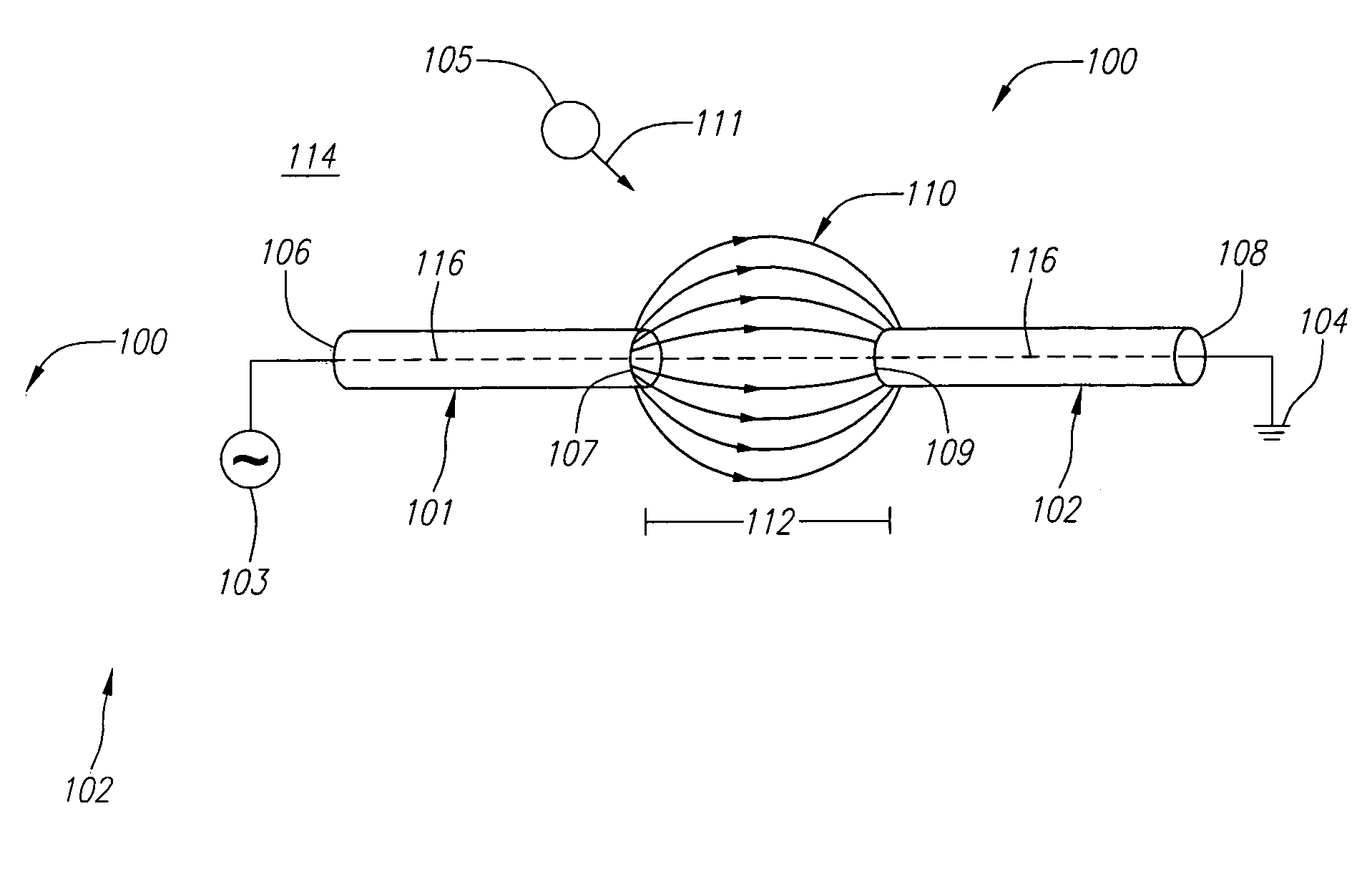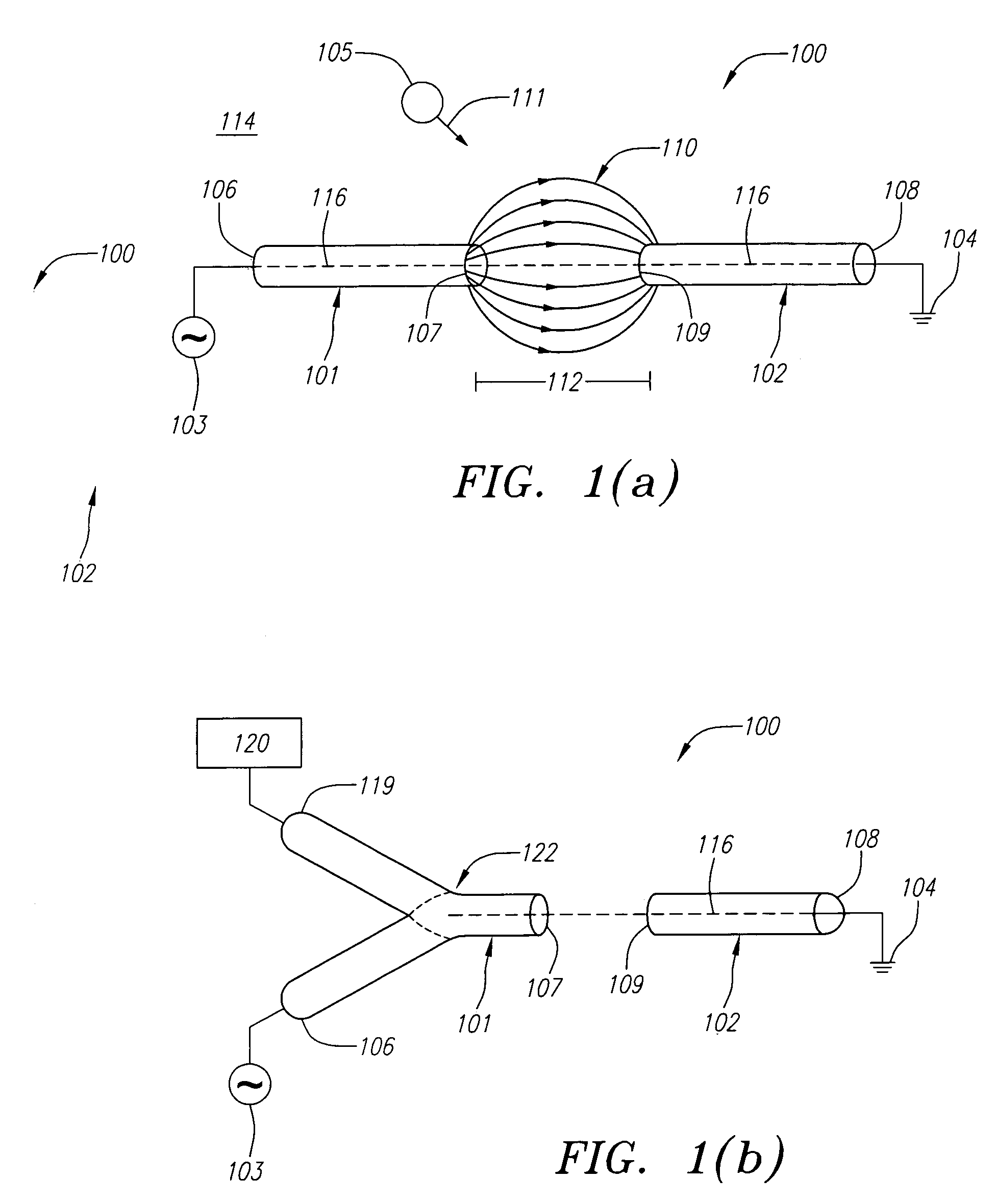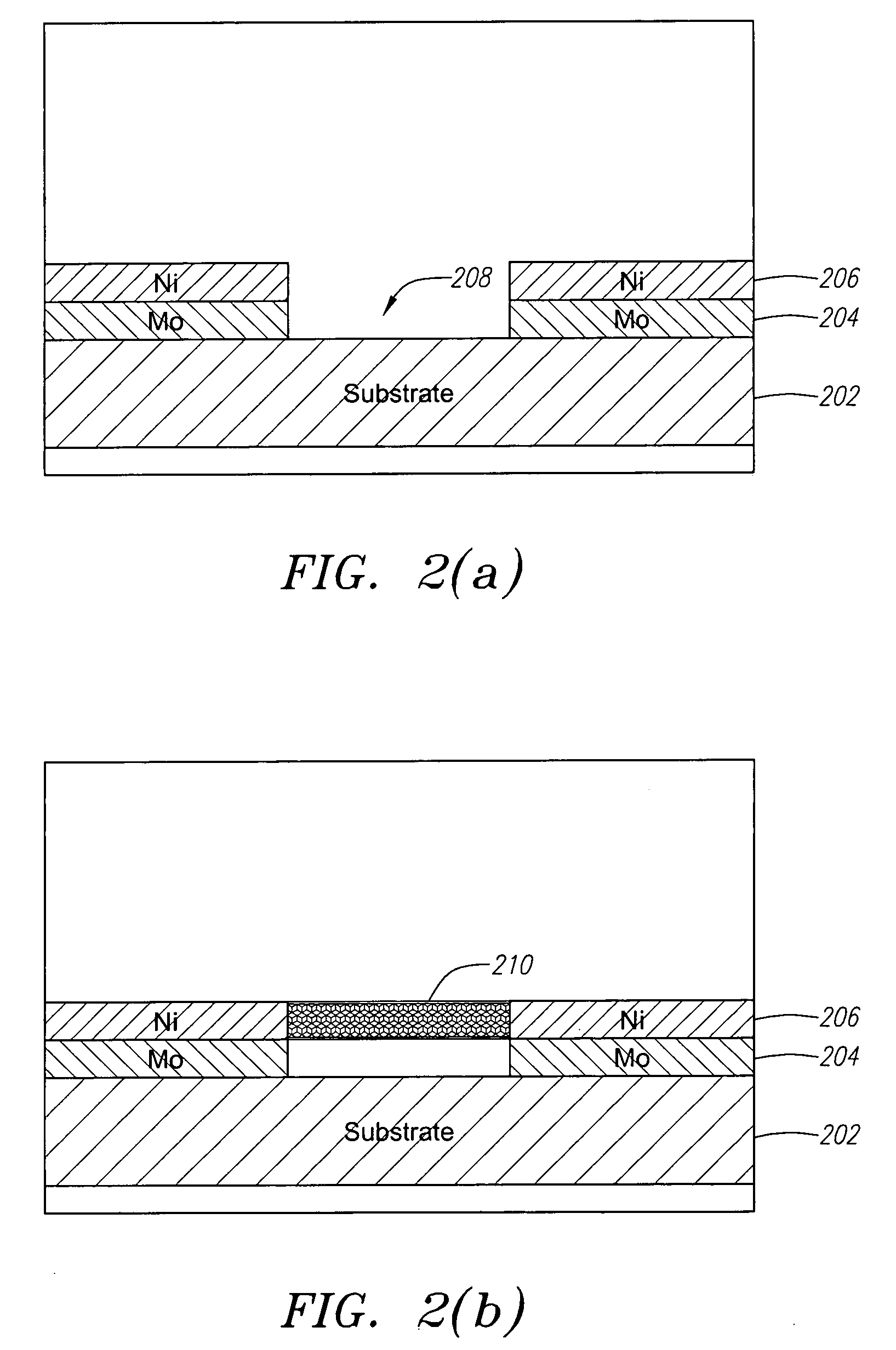Systems and methods for making and using nanoelectrodes
a technology of nanoelectrodes and nanoelectrodes, which is applied in the direction of electrostatic separators, diaphragms, electrolysis, etc., can solve the problems of limited electric field gradients, difficult separation of conducting electrodes, and only lithographically created electrodes for research purposes
- Summary
- Abstract
- Description
- Claims
- Application Information
AI Technical Summary
Benefits of technology
Problems solved by technology
Method used
Image
Examples
Embodiment Construction
[0024]The present invention provides systems and methods for making and using nanoelectrodes for the dielectrophoretic manipulation of polarizable objects. FIG. 1(a) depicts a nanoelectrode dielectrophoretic system 100, which is a preferred embodiment of the systems and methods described herein. The system 100 includes first and second elongated nanoelectrodes 101 and 102, which are electrically coupled with a first time-varying voltage source 103 and a second voltage source 104, respectively.
[0025]During operation, the voltage sources 103 and 104 apply a time-varying electric potential to the nanotubes 101 and 102 to create a time-varying electric field 110 between the two nanotubes 101 and 102. This electric field 110 induces a dipole moment on a polarizable object 105, which then, in the presence of a field gradient, experiences a dielectrophoretic force 111 that is sufficient to overcome the thermal Brownian motion and cause the object 105 to move. Preferably, the object 105 is ...
PUM
| Property | Measurement | Unit |
|---|---|---|
| length | aaaaa | aaaaa |
| length | aaaaa | aaaaa |
| size | aaaaa | aaaaa |
Abstract
Description
Claims
Application Information
 Login to View More
Login to View More - R&D
- Intellectual Property
- Life Sciences
- Materials
- Tech Scout
- Unparalleled Data Quality
- Higher Quality Content
- 60% Fewer Hallucinations
Browse by: Latest US Patents, China's latest patents, Technical Efficacy Thesaurus, Application Domain, Technology Topic, Popular Technical Reports.
© 2025 PatSnap. All rights reserved.Legal|Privacy policy|Modern Slavery Act Transparency Statement|Sitemap|About US| Contact US: help@patsnap.com



